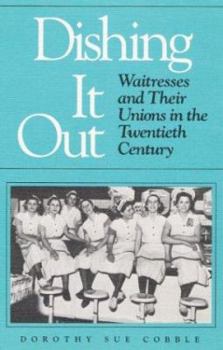Dishing It Out: Waitresses and Their Unions in the Twentieth Century (Working Class in American History)
(Part of the The Working Class in American History Series)
Select Format
Select Condition 
Book Overview
Back when SOS or Adam and Eve on a raft were things to order if you were hungry but a little short on time and money, nearly one-fourth of all waitresses belonged to unions. By the time their movement peaked in the 1940s and 1950s, the women had developed a distinctive form of working-class feminism, simultaneously pushing for equal rights and pay and affirming their need for special protections.
Dorothy Sue Cobble shows how sexual and racial segregation persisted in wait work, but she rejects the idea that this was caused by employers' actions or the exclusionary policies of male trade unionists. Dishing It Out contends that the success of waitress unionism was due to several factors: waitresses, for the most part, had nontraditional family backgrounds, and most were primary wage-earners. Their close-knit occupational community and sex-separate union encouraged female assertiveness and a decidedly unromantic view of men and marriage. Cobble skillfully combines oral interviews and extensive archival records to show how waitresses adopted the basic tenets of male-dominated craft unions but rejected other aspects of male union culture. The result is a book that will expand our understanding of feminism and unionism by including the gender conscious perspectives of working women.
Related Subjects
20th Century Business & Investing Economics Gay & Lesbian History Labor & Industrial Relations Modern (16th-21st Centuries) Political Science Politics & Government Politics & Social Sciences Popular Economics Social Science Social Sciences Unemployment Women in History Women's Studies





